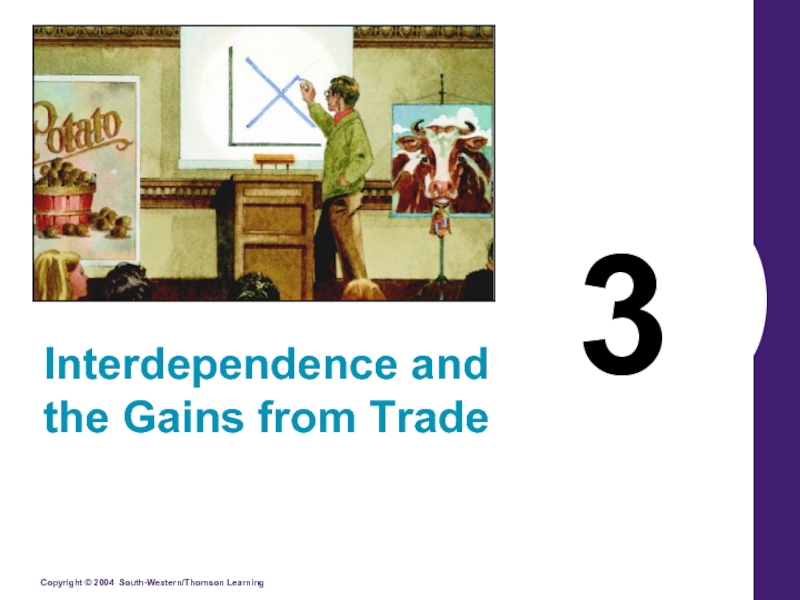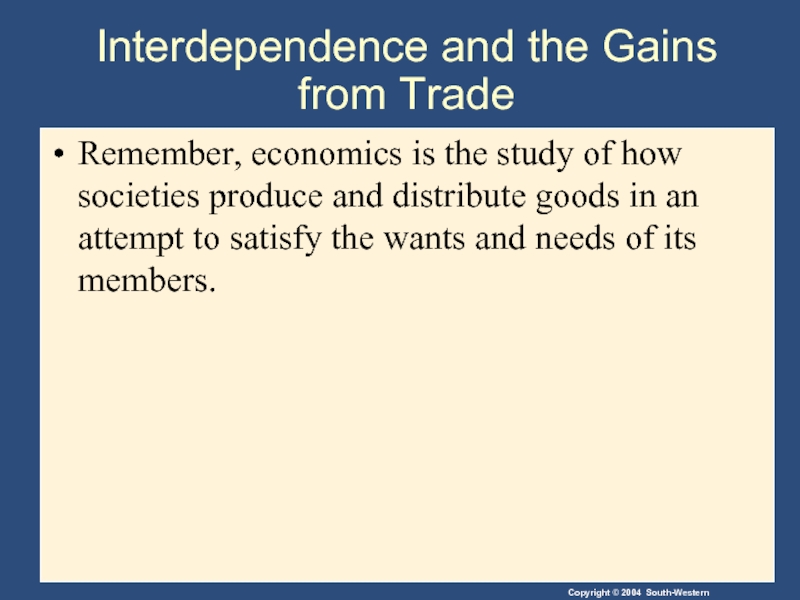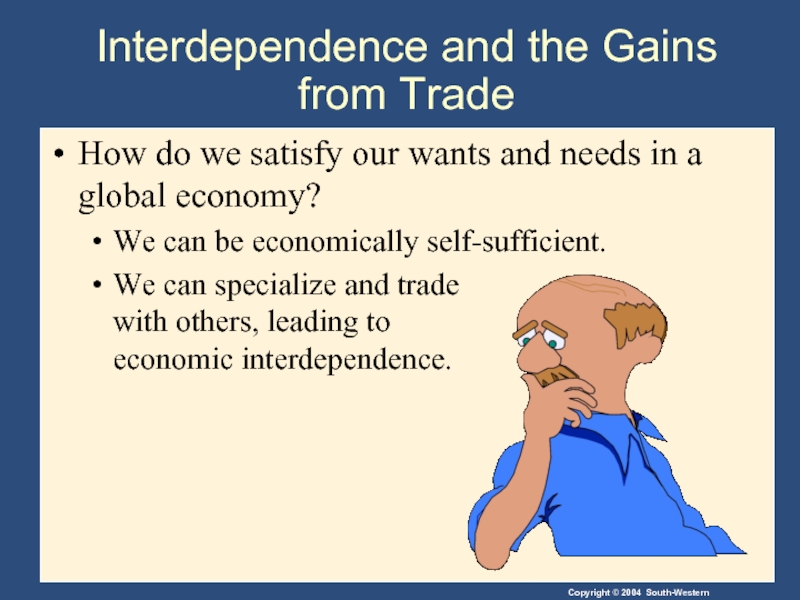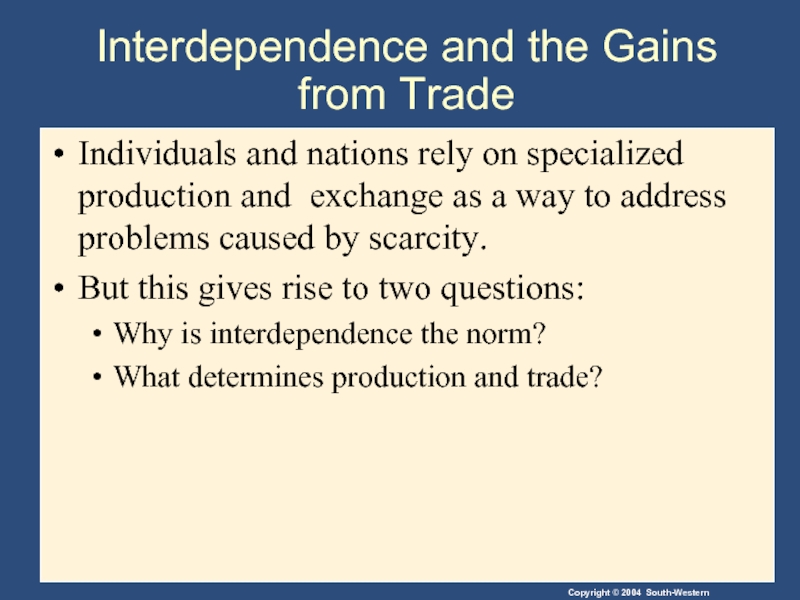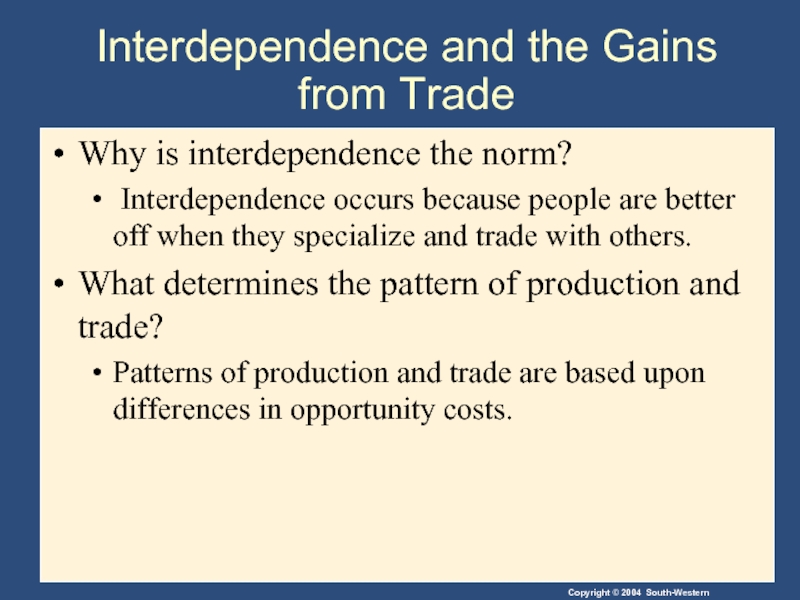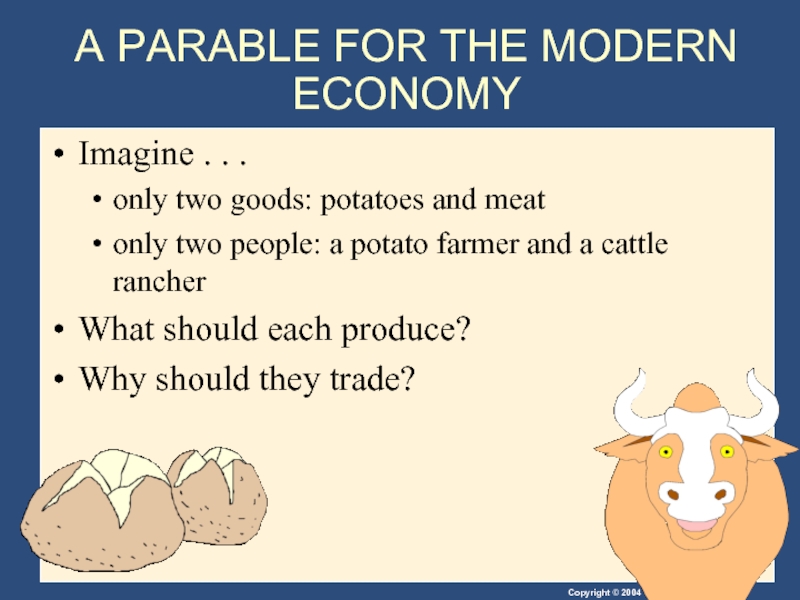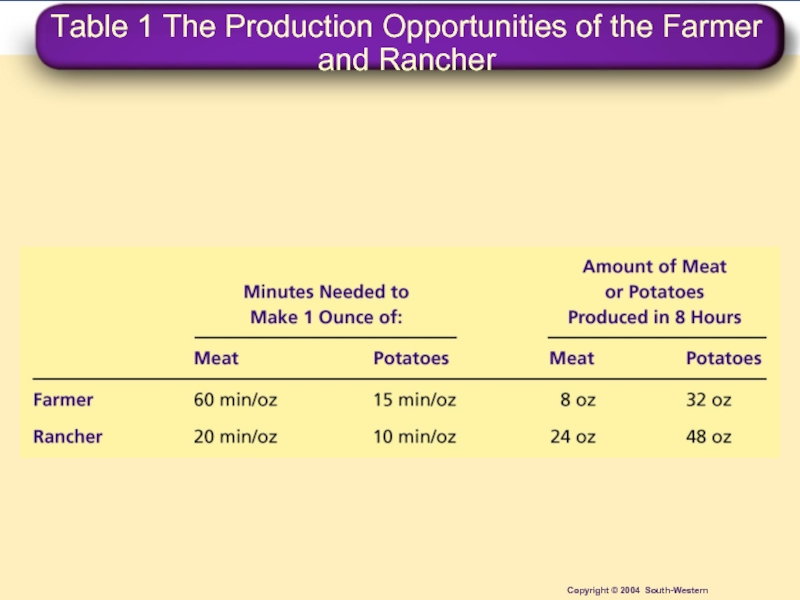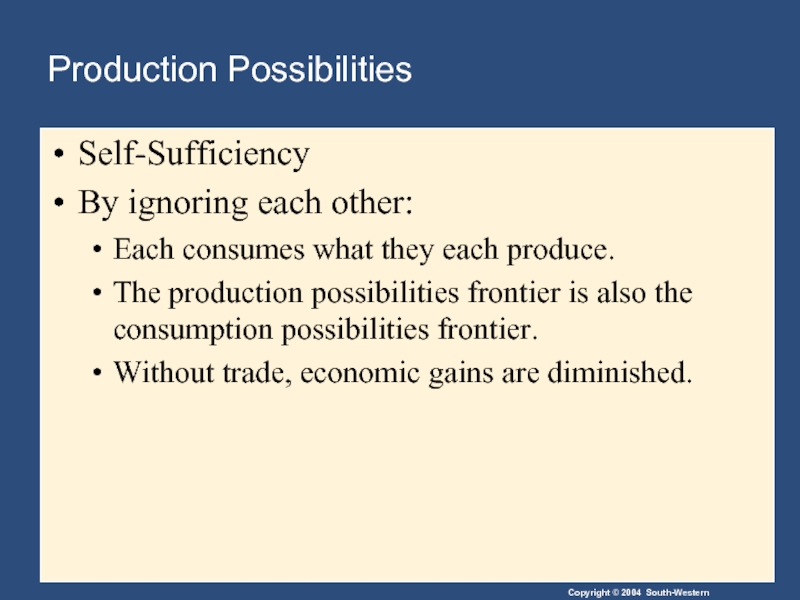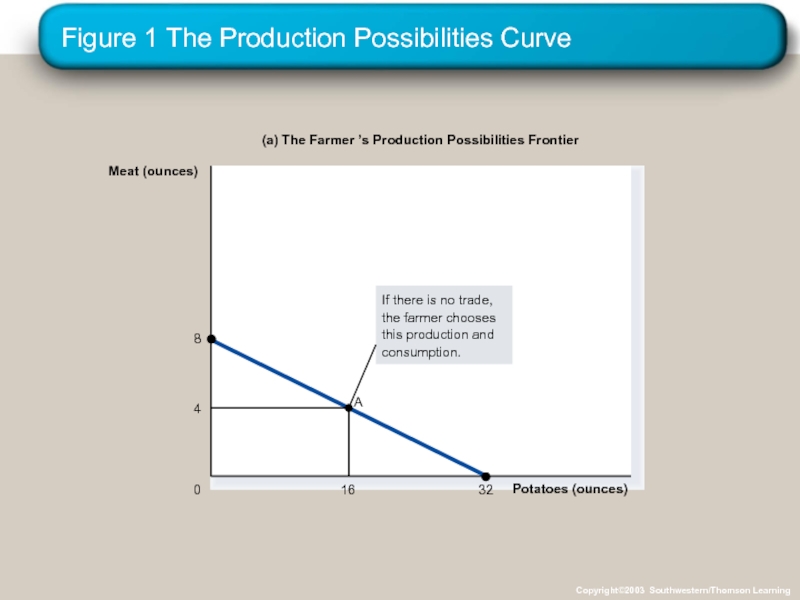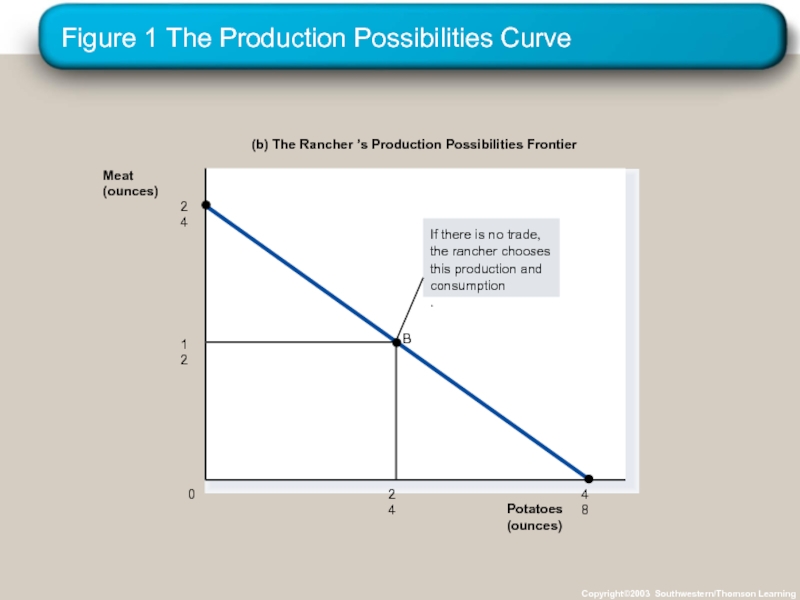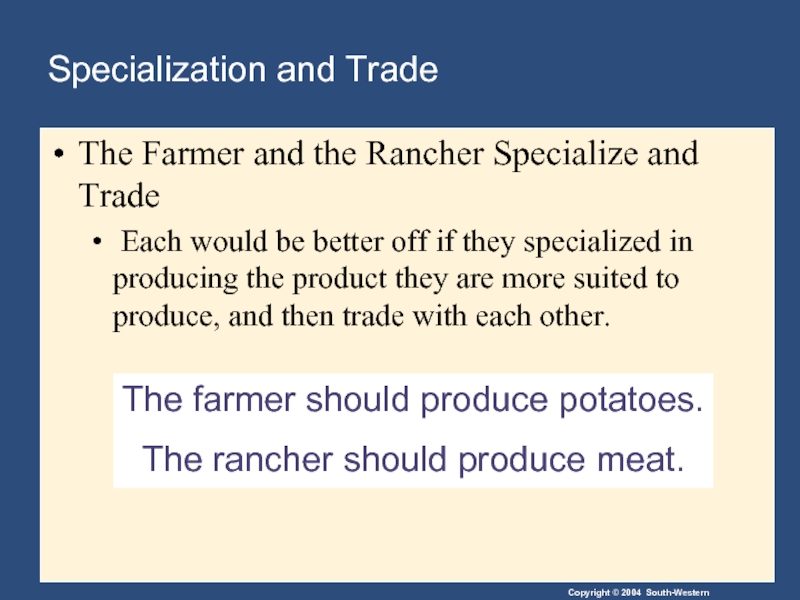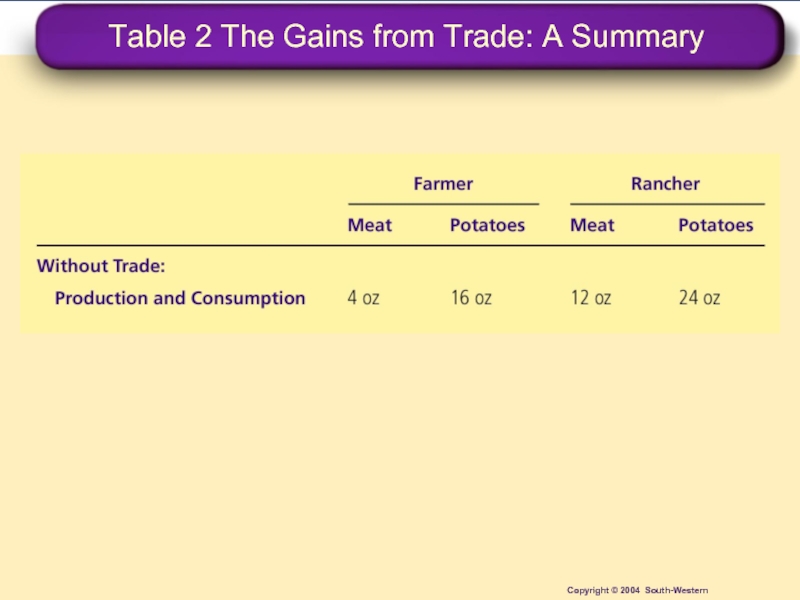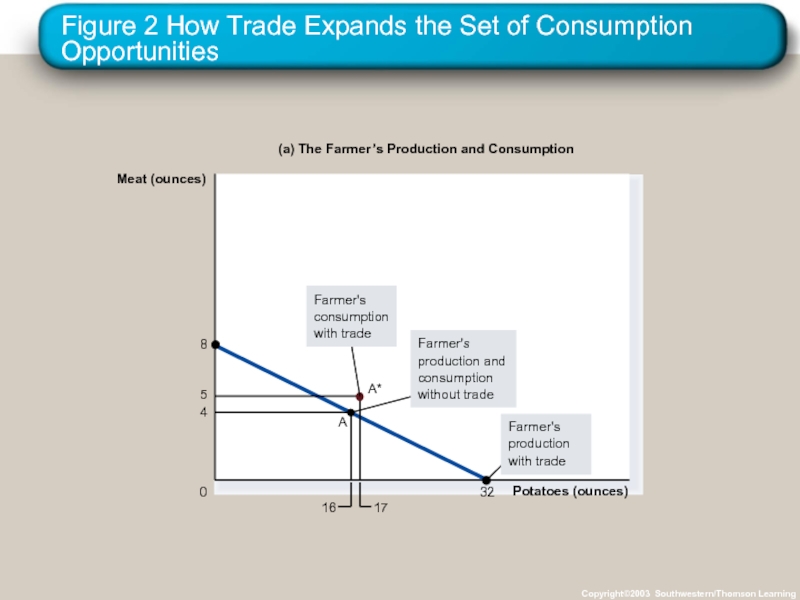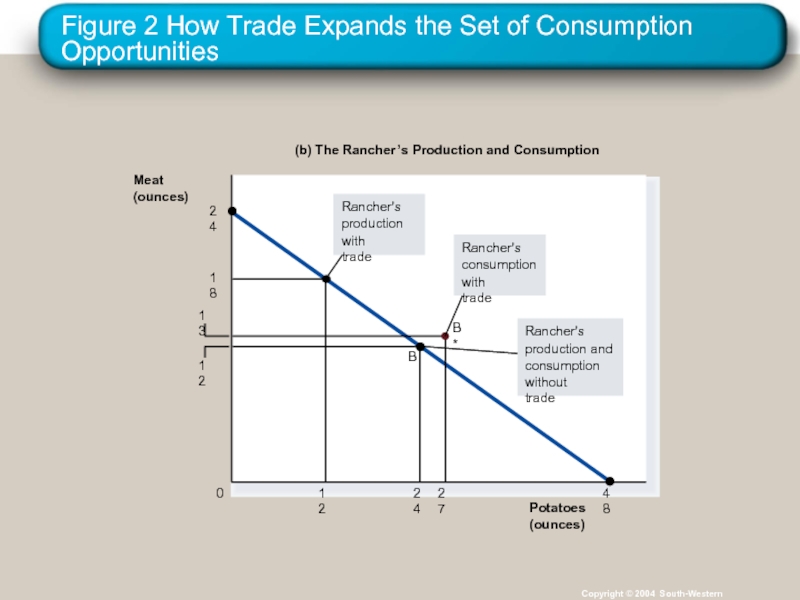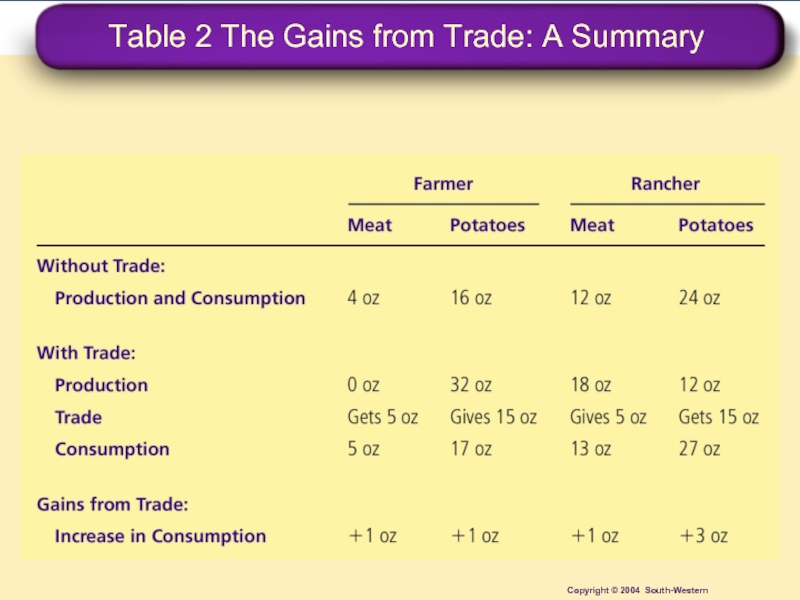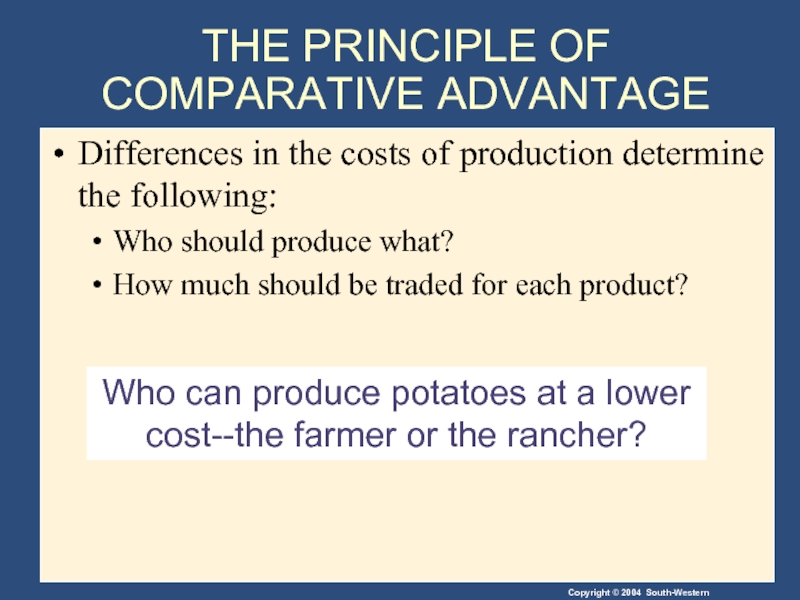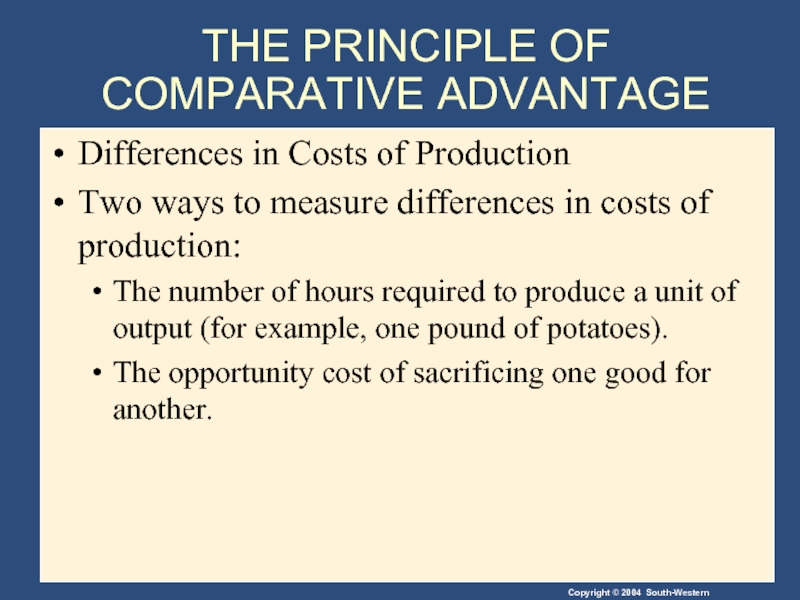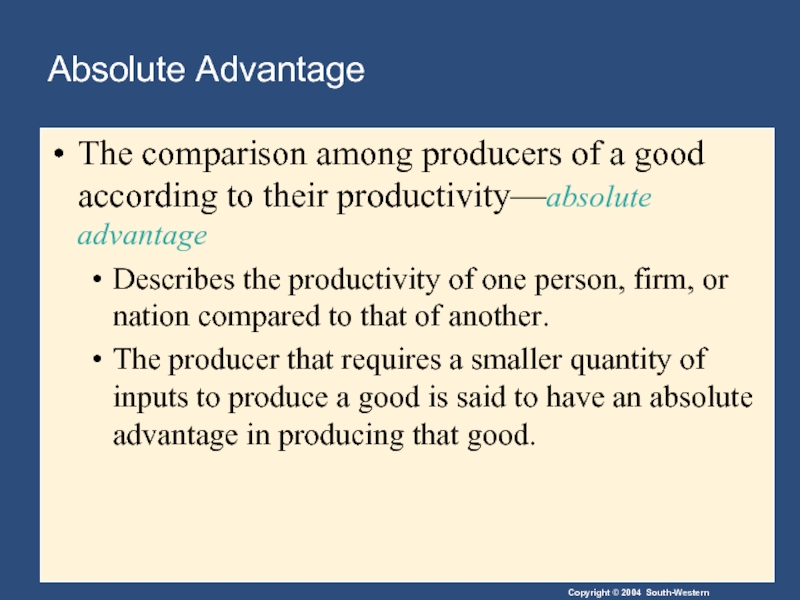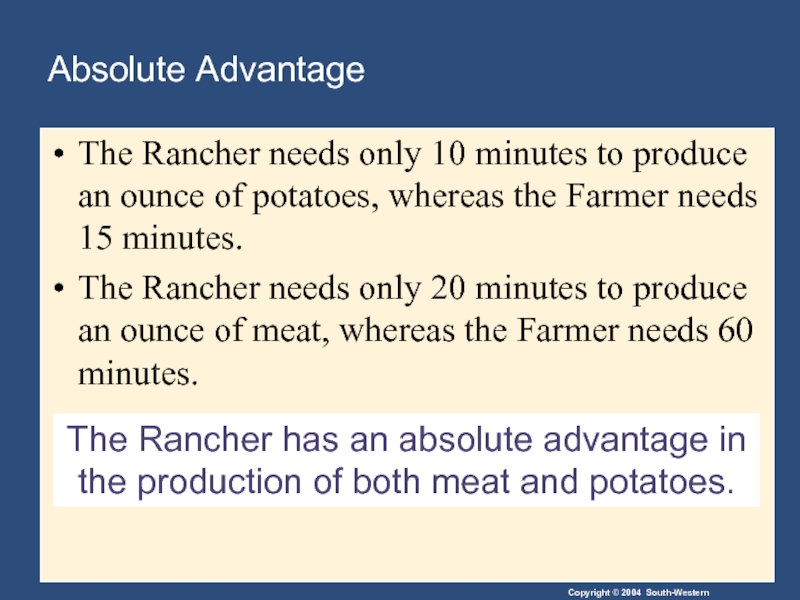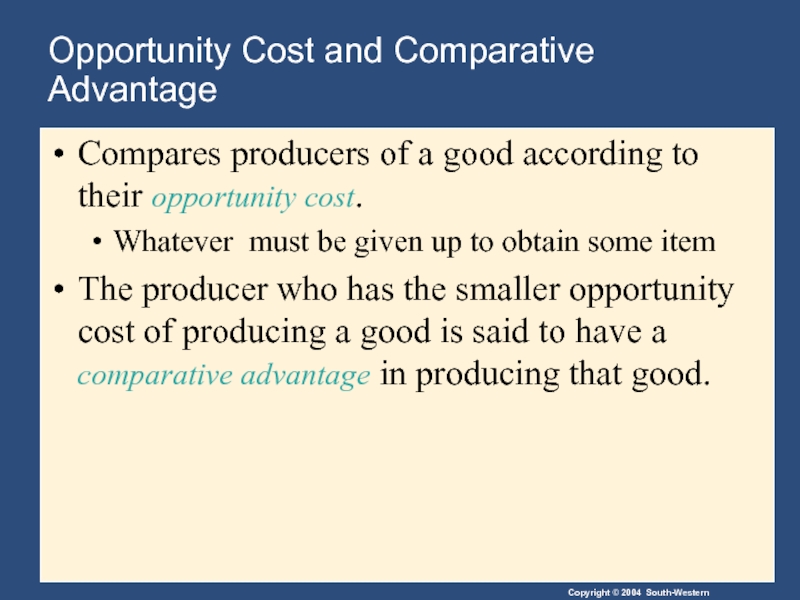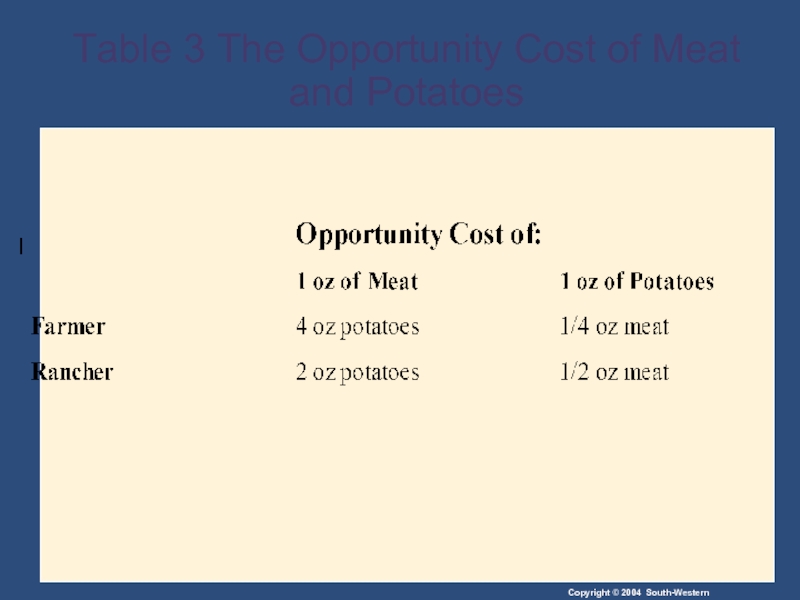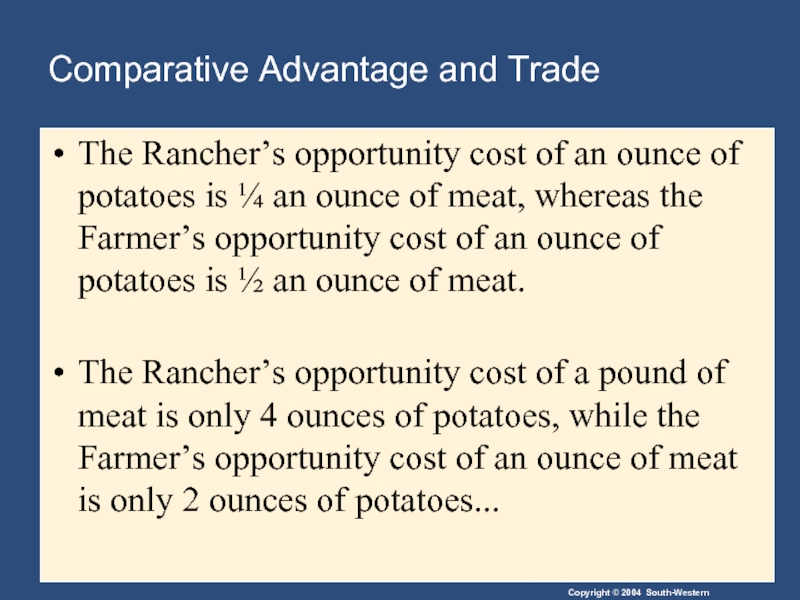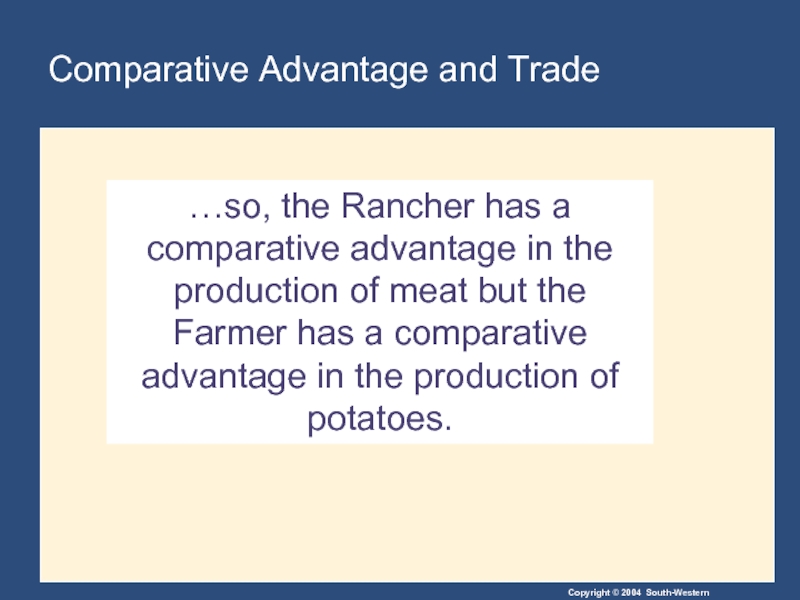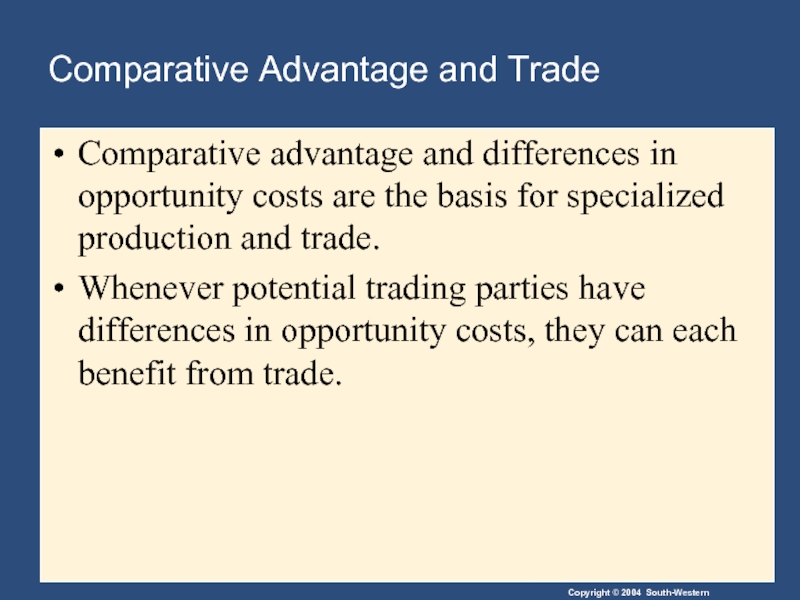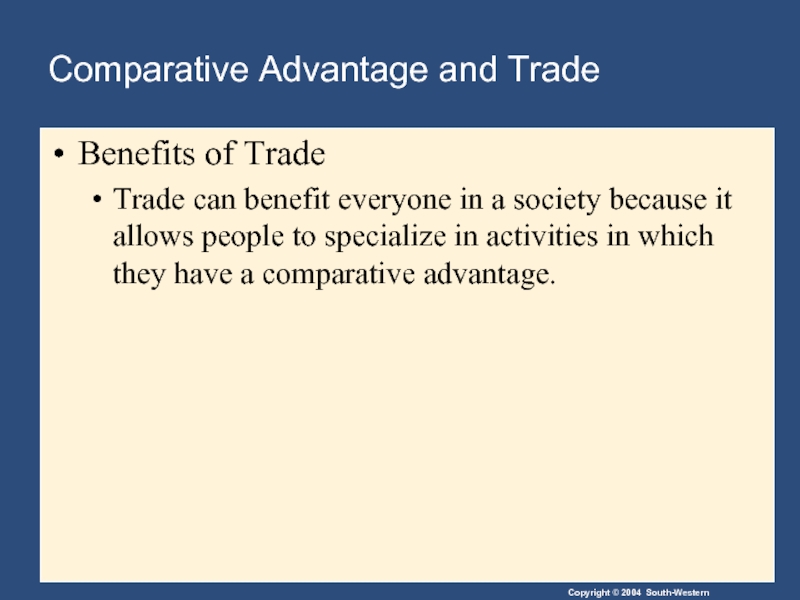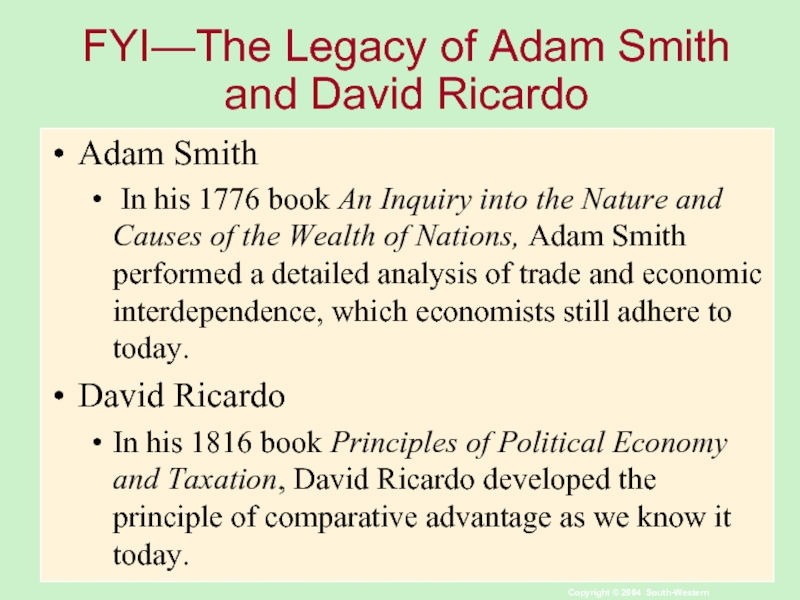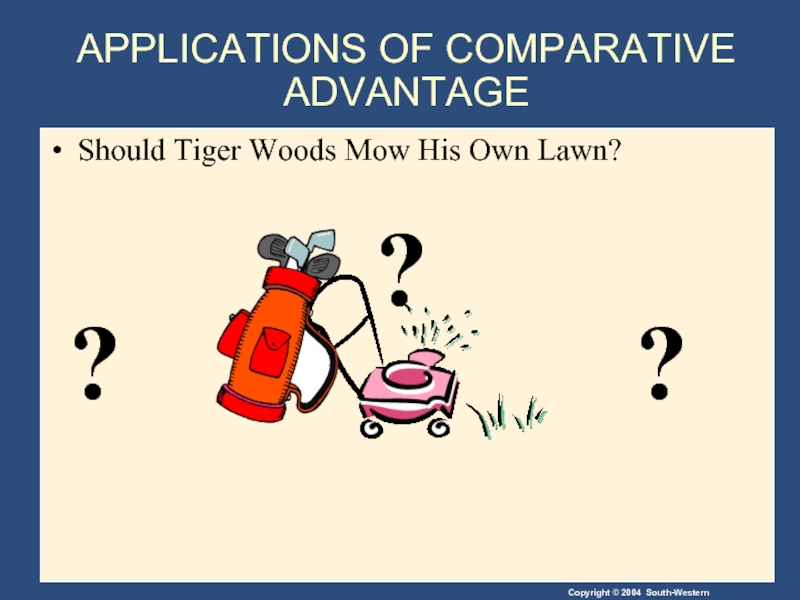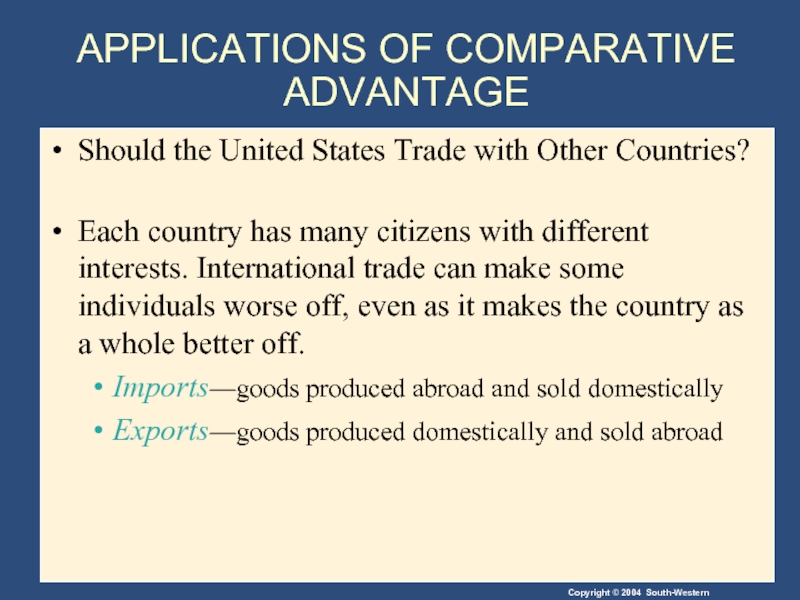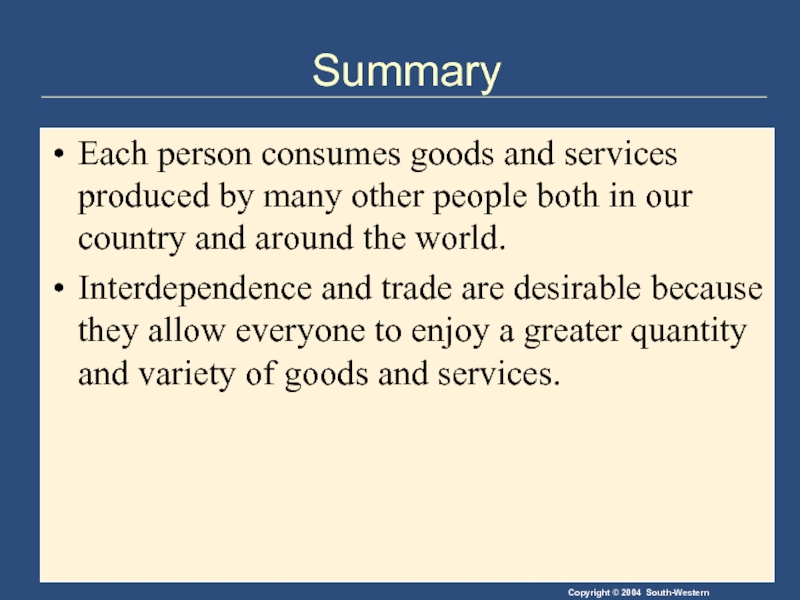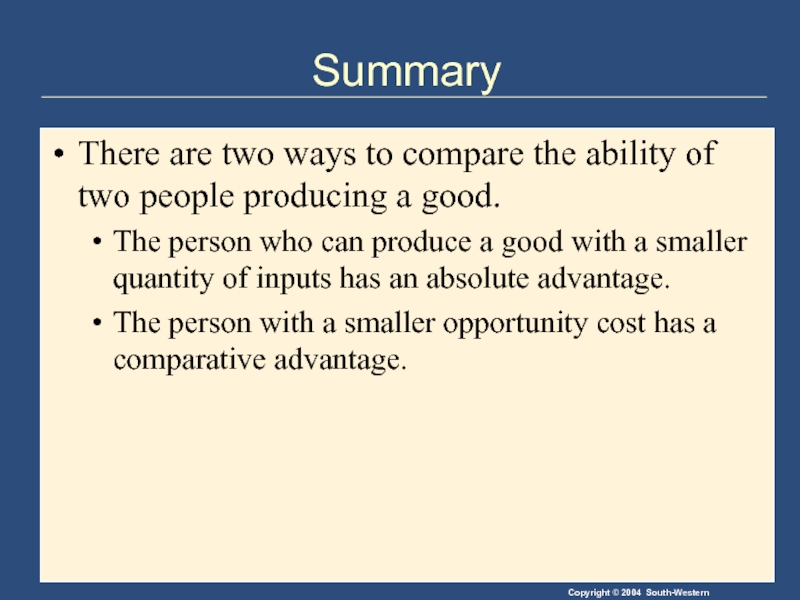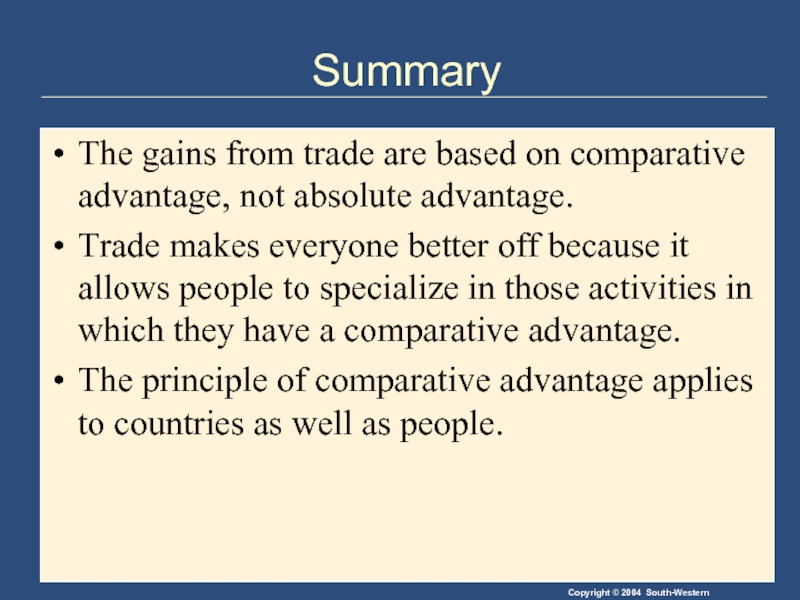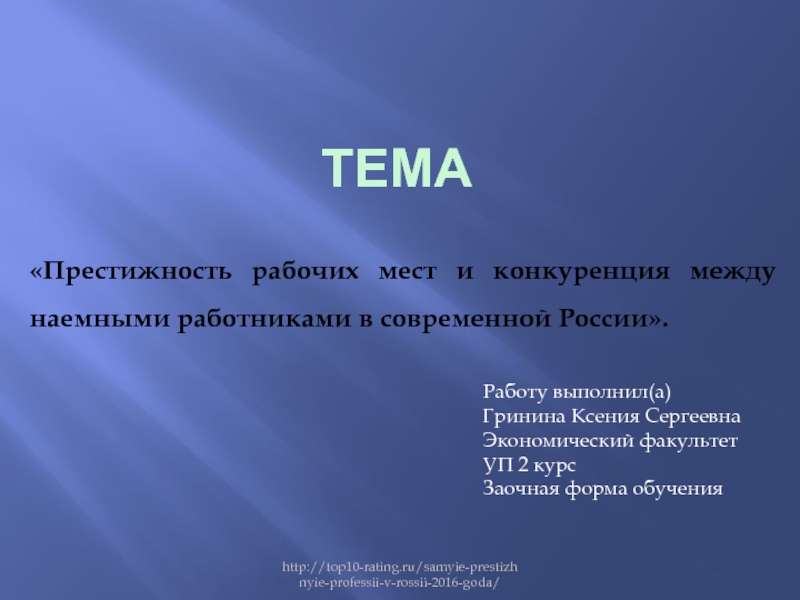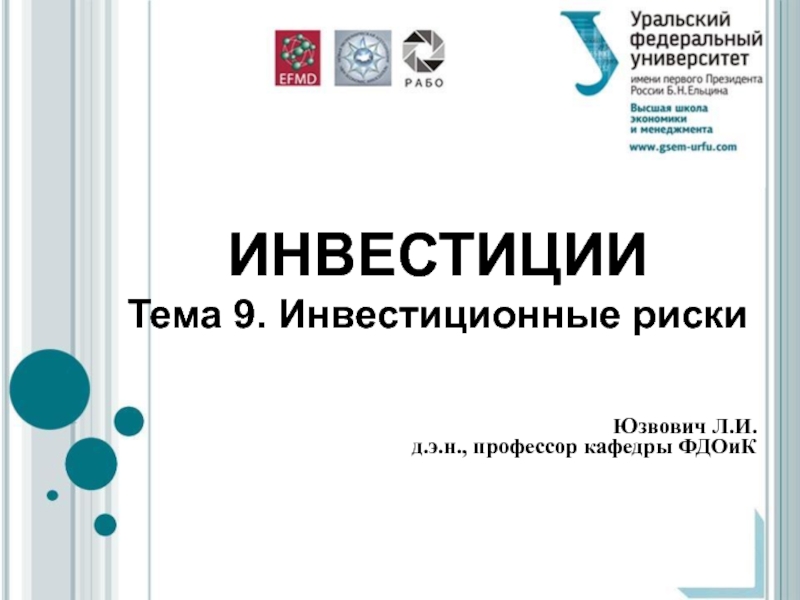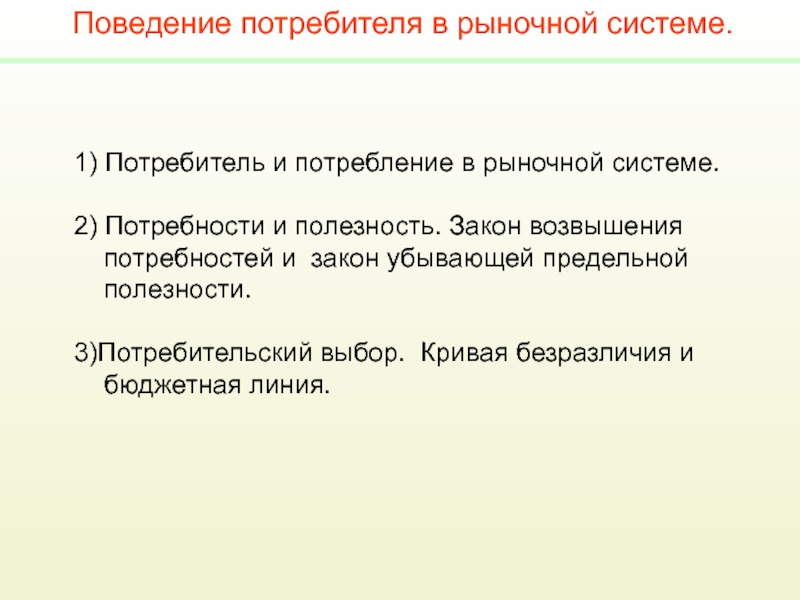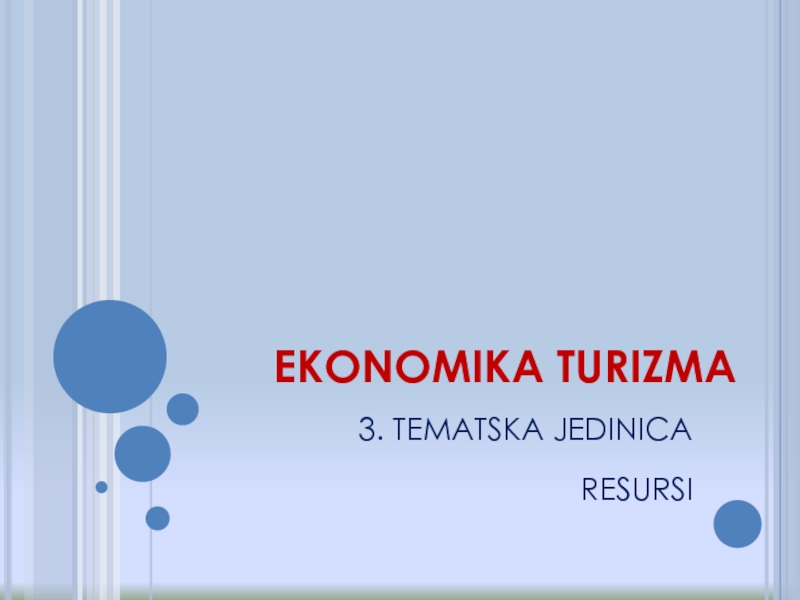- Главная
- Разное
- Дизайн
- Бизнес и предпринимательство
- Аналитика
- Образование
- Развлечения
- Красота и здоровье
- Финансы
- Государство
- Путешествия
- Спорт
- Недвижимость
- Армия
- Графика
- Культурология
- Еда и кулинария
- Лингвистика
- Английский язык
- Астрономия
- Алгебра
- Биология
- География
- Детские презентации
- Информатика
- История
- Литература
- Маркетинг
- Математика
- Медицина
- Менеджмент
- Музыка
- МХК
- Немецкий язык
- ОБЖ
- Обществознание
- Окружающий мир
- Педагогика
- Русский язык
- Технология
- Физика
- Философия
- Химия
- Шаблоны, картинки для презентаций
- Экология
- Экономика
- Юриспруденция
Interdependence and the gains from trade презентация
Содержание
- 1. Interdependence and the gains from trade
- 2. Interdependence and the Gains from Trade
- 3. Interdependence and the Gains from
- 4. Interdependence and the Gains from
- 5. Interdependence and the Gains from Trade Why
- 6. A PARABLE FOR THE MODERN ECONOMY Imagine
- 7. Table 1 The Production Opportunities of the Farmer and Rancher Copyright © 2004 South-Western
- 8. Production Possibilities Self-Sufficiency By
- 9. Figure 1 The Production Possibilities Curve
- 10. Figure 1 The Production Possibilities Curve Copyright©2003
- 11. The farmer should produce potatoes.
- 12. Table 2 The Gains from Trade: A Summary Copyright © 2004 South-Western
- 13. Figure 2 How Trade Expands the Set
- 14. Figure 2 How Trade Expands the Set
- 15. Table 2 The Gains from Trade: A Summary Copyright © 2004 South-Western
- 16. Who can produce potatoes at
- 17. THE PRINCIPLE OF COMPARATIVE ADVANTAGE Differences
- 18. Absolute Advantage The comparison among
- 19. The Rancher has an absolute advantage in
- 20. Opportunity Cost and Comparative Advantage
- 21. Comparative Advantage and Trade Who
- 22. Table 3 The Opportunity Cost of Meat and Potatoes
- 23. Comparative Advantage and Trade The Rancher’s opportunity
- 24. …so, the Rancher has a comparative
- 25. Comparative Advantage and Trade Comparative
- 26. Comparative Advantage and Trade Benefits
- 27. FYI—The Legacy of Adam Smith and David
- 28. APPLICATIONS OF COMPARATIVE ADVANTAGE ?
- 29. APPLICATIONS OF COMPARATIVE ADVANTAGE Should
- 30. Summary Each person consumes goods and services
- 31. Summary There are two ways to compare
- 32. Summary The gains from trade are based
Слайд 2
Interdependence and the Gains from Trade
Remember, economics is the study of
Слайд 3
Interdependence and the Gains from Trade
How do we satisfy our wants
We can be economically self-sufficient.
We can specialize and trade with others, leading to economic interdependence.
Слайд 4
Interdependence and the Gains from Trade
Individuals and nations rely on specialized
But this gives rise to two questions:
Why is interdependence the norm?
What determines production and trade?
Слайд 5Interdependence and the Gains from Trade
Why is interdependence the norm?
Interdependence
What determines the pattern of production and trade?
Patterns of production and trade are based upon differences in opportunity costs.
Слайд 6A PARABLE FOR THE MODERN ECONOMY
Imagine . . .
only two goods:
only two people: a potato farmer and a cattle rancher
What should each produce?
Why should they trade?
Слайд 8
Production Possibilities
Self-Sufficiency
By ignoring each other:
Each consumes what they each produce.
The
Without trade, economic gains are diminished.
Слайд 9Figure 1 The Production Possibilities Curve
Potatoes (ounces)
0
Meat (ounces)
(a) The Farmer
’
s Production
Copyright©2003 Southwestern/Thomson Learning
Слайд 10Figure 1 The Production Possibilities Curve
Copyright©2003 Southwestern/Thomson Learning
Potatoes (ounces)
0
Meat (ounces)
(b) The
’
s Production Possibilities Frontier
Слайд 11
The farmer should produce potatoes.
The rancher should produce meat.
Specialization and
The Farmer and the Rancher Specialize and Trade
Each would be better off if they specialized in producing the product they are more suited to produce, and then trade with each other.
Слайд 13Figure 2 How Trade Expands the Set of Consumption Opportunities
Copyright©2003 Southwestern/Thomson
Potatoes (ounces)
0
Meat (ounces)
(a) The Farmer
’
s Production and Consumption
Слайд 14Figure 2 How Trade Expands the Set of Consumption Opportunities
Copyright ©
Potatoes (ounces)
0
Meat (ounces)
(b) The Rancher
’
s Production and Consumption
Слайд 16
Who can produce potatoes at a lower cost--the farmer or the
THE PRINCIPLE OF COMPARATIVE ADVANTAGE
Differences in the costs of production determine the following:
Who should produce what?
How much should be traded for each product?
Слайд 17THE PRINCIPLE OF COMPARATIVE ADVANTAGE
Differences in Costs of Production
Two ways
The number of hours required to produce a unit of output (for example, one pound of potatoes).
The opportunity cost of sacrificing one good for another.
Слайд 18
Absolute Advantage
The comparison among producers of a good according to their
Describes the productivity of one person, firm, or nation compared to that of another.
The producer that requires a smaller quantity of inputs to produce a good is said to have an absolute advantage in producing that good.
Слайд 19The Rancher has an absolute advantage in the production of both
Absolute Advantage
The Rancher needs only 10 minutes to produce an ounce of potatoes, whereas the Farmer needs 15 minutes.
The Rancher needs only 20 minutes to produce an ounce of meat, whereas the Farmer needs 60 minutes.
Слайд 20
Opportunity Cost and Comparative Advantage
Compares producers of a good according to
Whatever must be given up to obtain some item
The producer who has the smaller opportunity cost of producing a good is said to have a comparative advantage in producing that good.
Слайд 21
Comparative Advantage and Trade
Who has the absolute advantage?
The farmer or the
Who has the comparative advantage?
The farmer or the rancher?
Слайд 23Comparative Advantage and Trade
The Rancher’s opportunity cost of an ounce of
The Rancher’s opportunity cost of a pound of meat is only 4 ounces of potatoes, while the Farmer’s opportunity cost of an ounce of meat is only 2 ounces of potatoes...
Слайд 24
…so, the Rancher has a comparative advantage in the production of
Comparative Advantage and Trade
Слайд 25
Comparative Advantage and Trade
Comparative advantage and differences in opportunity costs are
Whenever potential trading parties have differences in opportunity costs, they can each benefit from trade.
Слайд 26
Comparative Advantage and Trade
Benefits of Trade
Trade can benefit everyone in
Слайд 27FYI—The Legacy of Adam Smith and David Ricardo
Adam Smith
In his
David Ricardo
In his 1816 book Principles of Political Economy and Taxation, David Ricardo developed the principle of comparative advantage as we know it today.
Слайд 29APPLICATIONS OF COMPARATIVE ADVANTAGE
Should the United States Trade with Other
Each country has many citizens with different interests. International trade can make some individuals worse off, even as it makes the country as a whole better off.
Imports—goods produced abroad and sold domestically
Exports—goods produced domestically and sold abroad
Слайд 30Summary
Each person consumes goods and services produced by many other people
Interdependence and trade are desirable because they allow everyone to enjoy a greater quantity and variety of goods and services.
Слайд 31Summary
There are two ways to compare the ability of two people
The person who can produce a good with a smaller quantity of inputs has an absolute advantage.
The person with a smaller opportunity cost has a comparative advantage.
Слайд 32Summary
The gains from trade are based on comparative advantage, not absolute
Trade makes everyone better off because it allows people to specialize in those activities in which they have a comparative advantage.
The principle of comparative advantage applies to countries as well as people.
